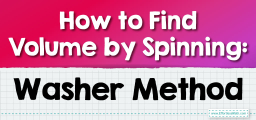Calculating the Surface Area of Prisms and Cylinders

Examples
Practice Questions:
- Determine the surface area of a rectangular prism with dimensions \(6 \text{ cm} \times 5 \text{ cm} \times 8 \text{ cm}\).
- What is the surface area of a cylinder with a radius of \(5 \text{ cm}\) and a height of \(10 \text{ cm}\)?
- \( 236 \text{ cm}^2 \)
- \( 471 \text{ cm}^2 \)
Original price was: $109.99.$54.99Current price is: $54.99.
Original price was: $109.99.$54.99Current price is: $54.99.
Original price was: $114.99.$54.99Current price is: $54.99.
Related to This Article
More math articles
- 6 Keys to Studying Effectively for Your Math Class
- The Ultimate Keystone Algebra 1 Course (+FREE Worksheets)
- Grade 3 Math: Multiplication Facts (0-5)
- FREE 6th Grade Georgia Milestones Assessment System Math Practice Test
- 5th Grade ACT Aspire Math FREE Sample Practice Questions
- Praxis Core Math Practice Test Questions
- How to ACE the ATI TEAS 7 Mathematics?
- 8th Grade Georgia Milestones Assessment System Math FREE Sample Practice Questions
- Intelligent Math Puzzle – Challenge 83
- 6th Grade LEAP Math Worksheets: FREE & Printable




























What people say about "Calculating the Surface Area of Prisms and Cylinders - Effortless Math: We Help Students Learn to LOVE Mathematics"?
No one replied yet.